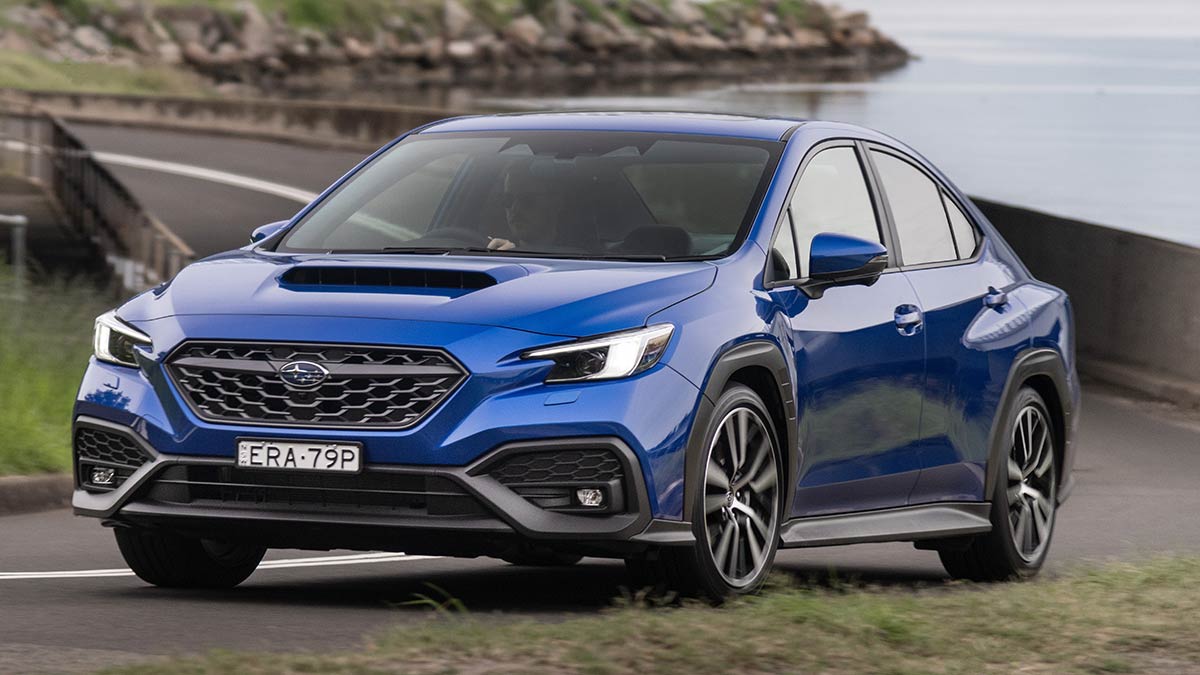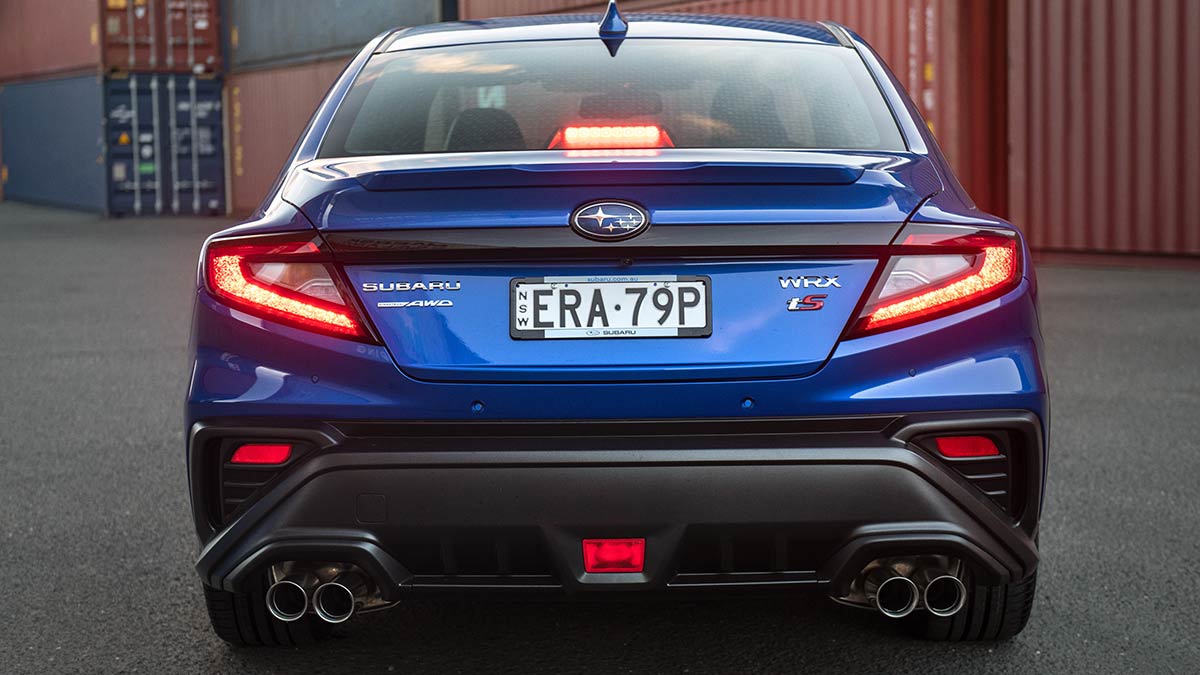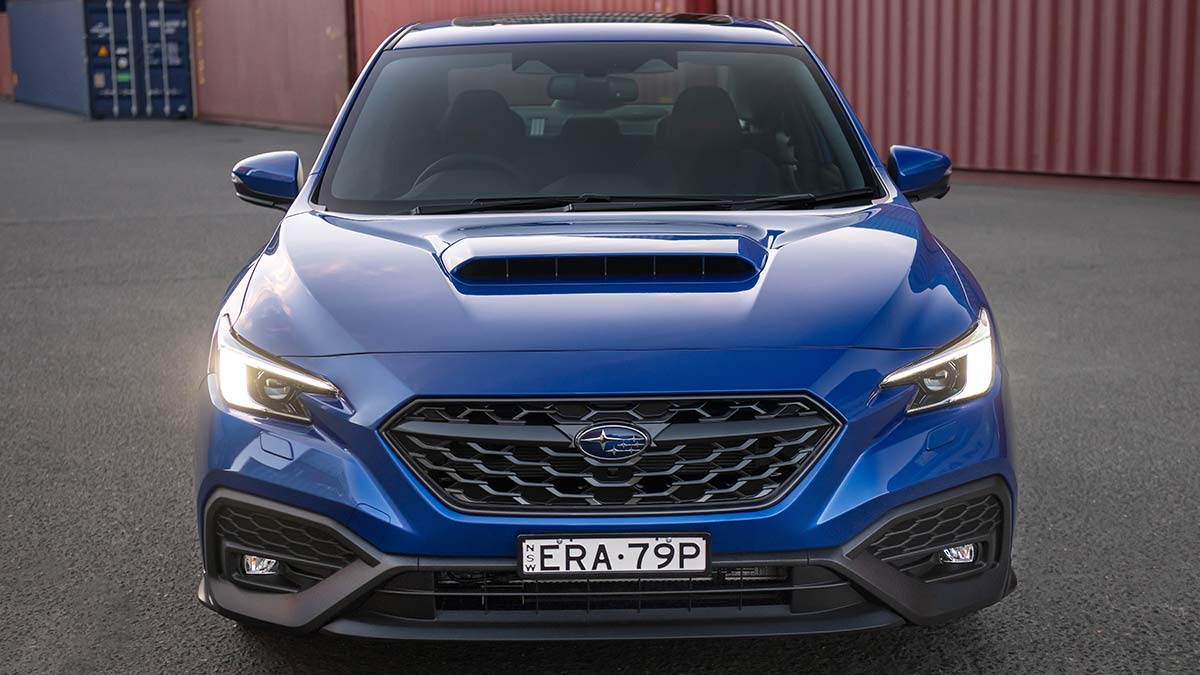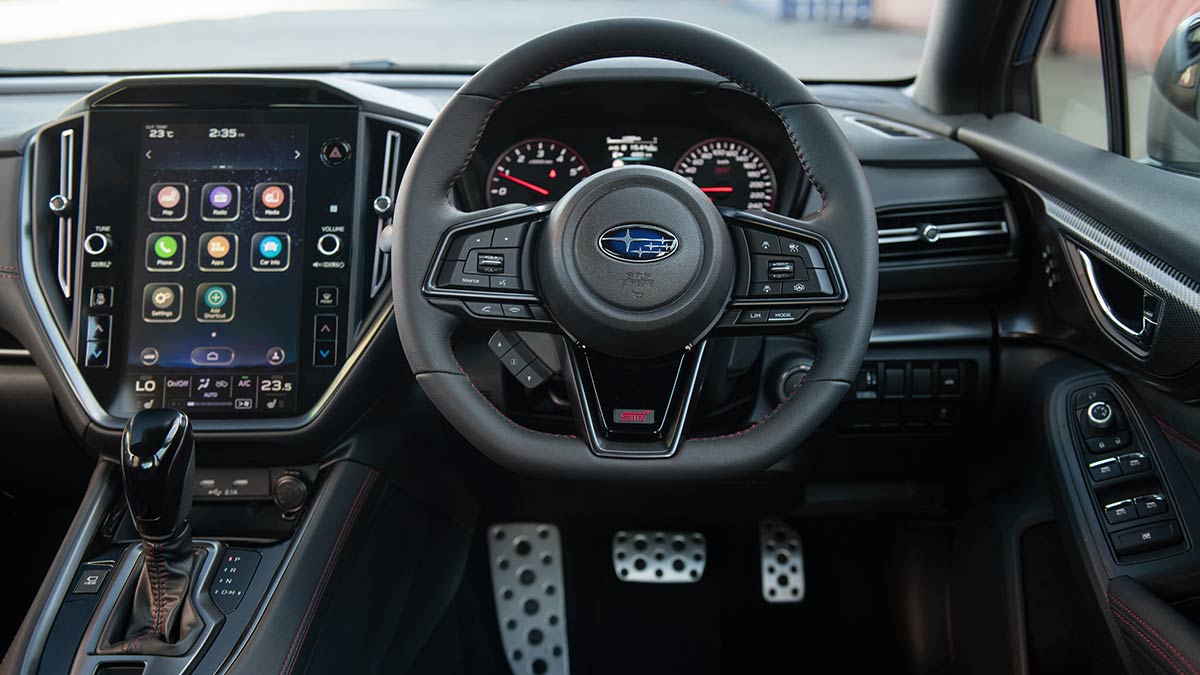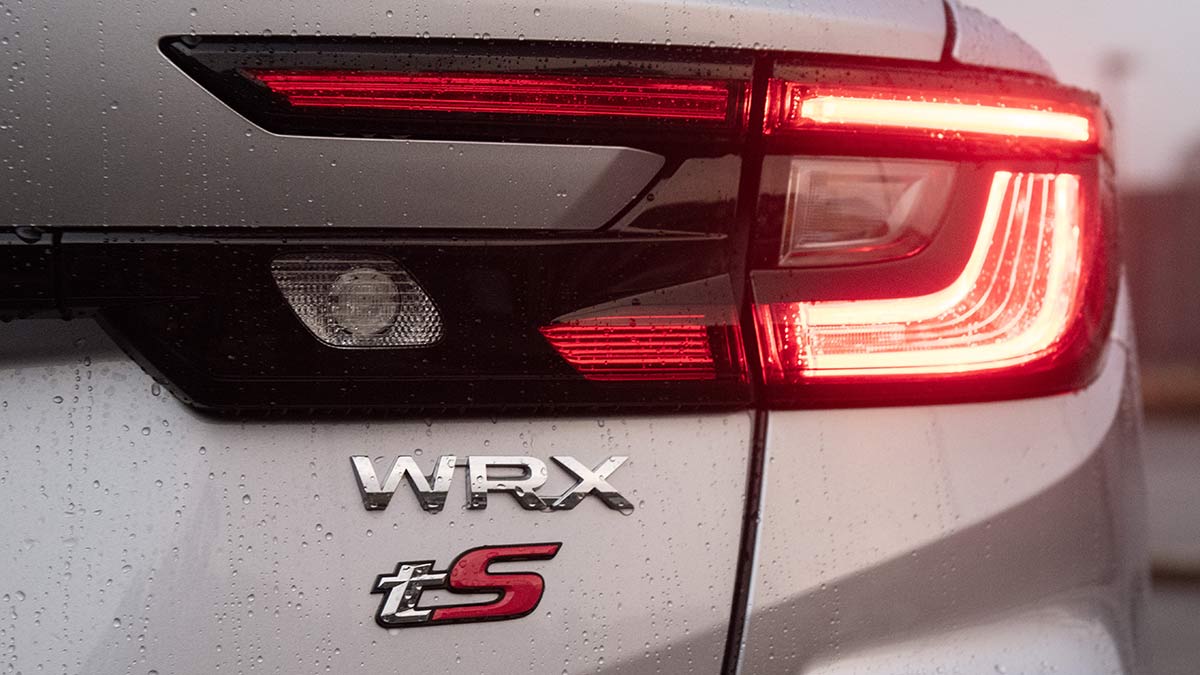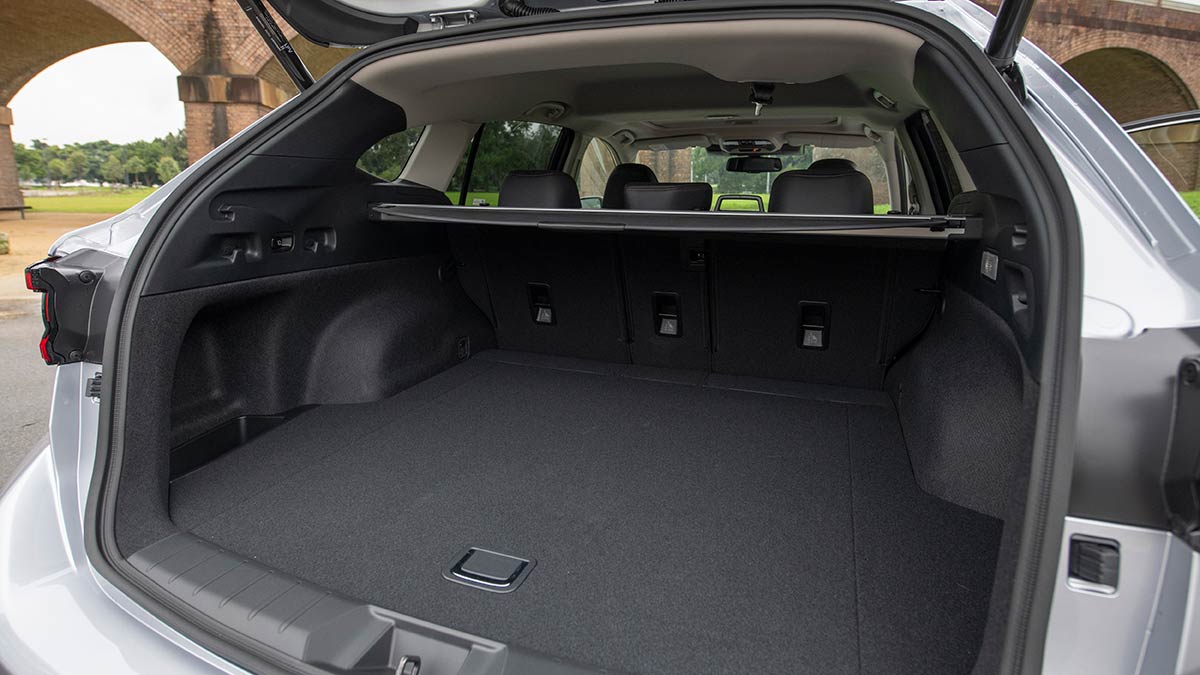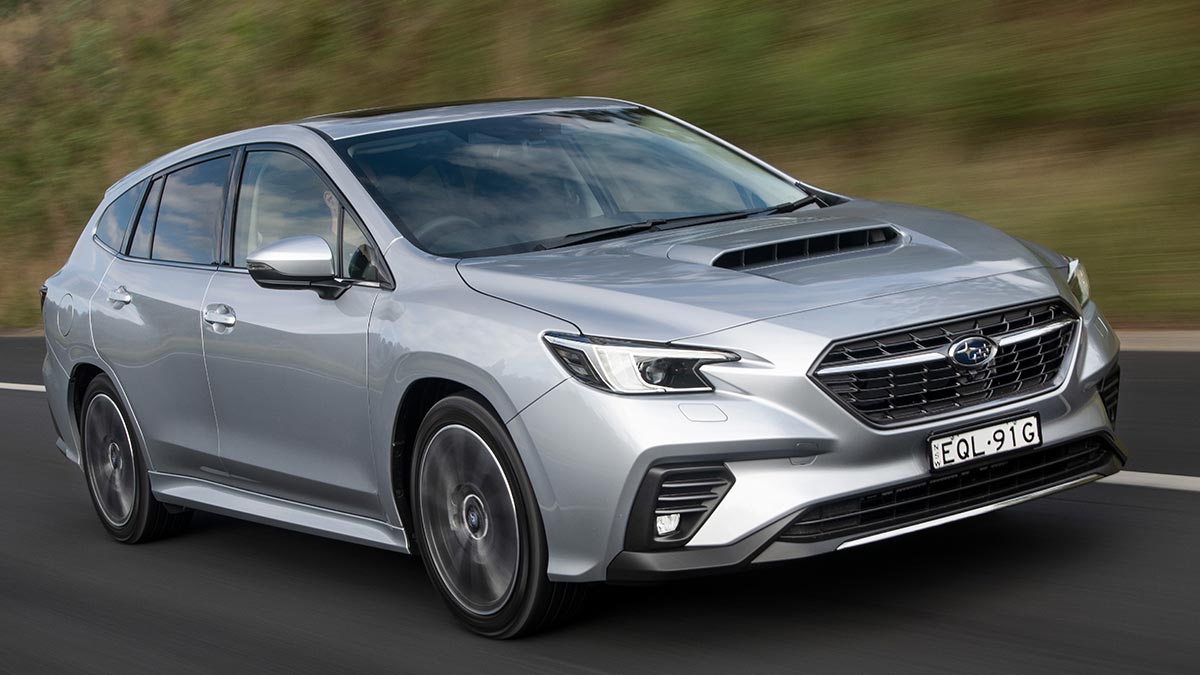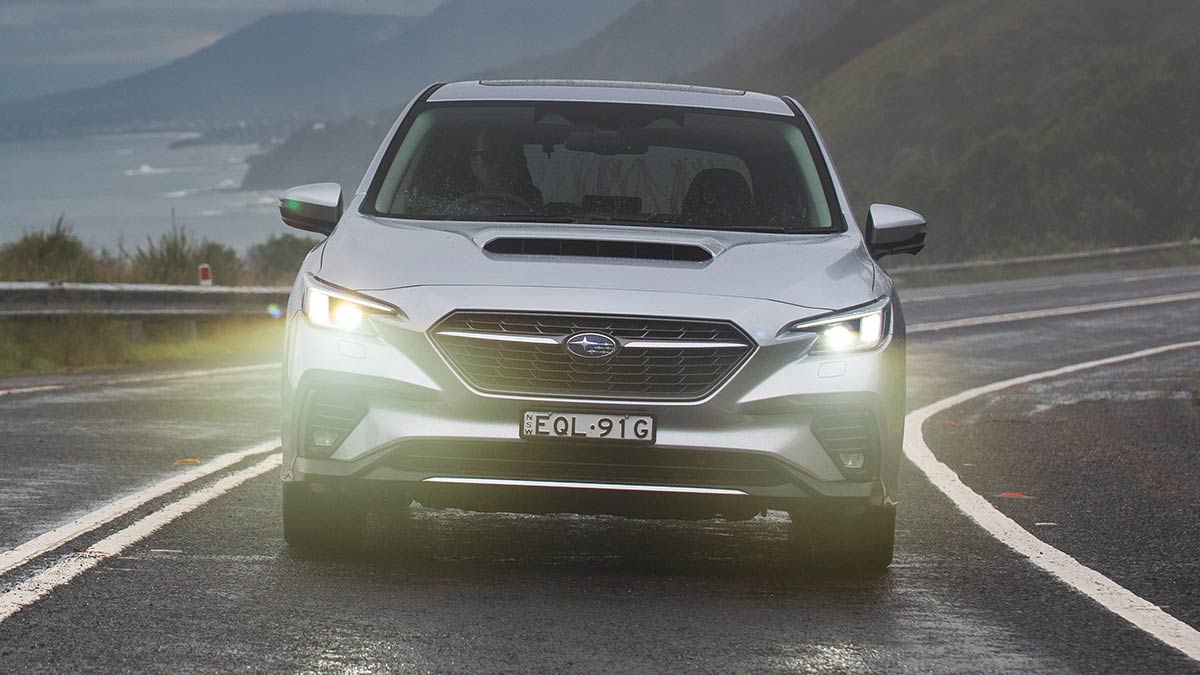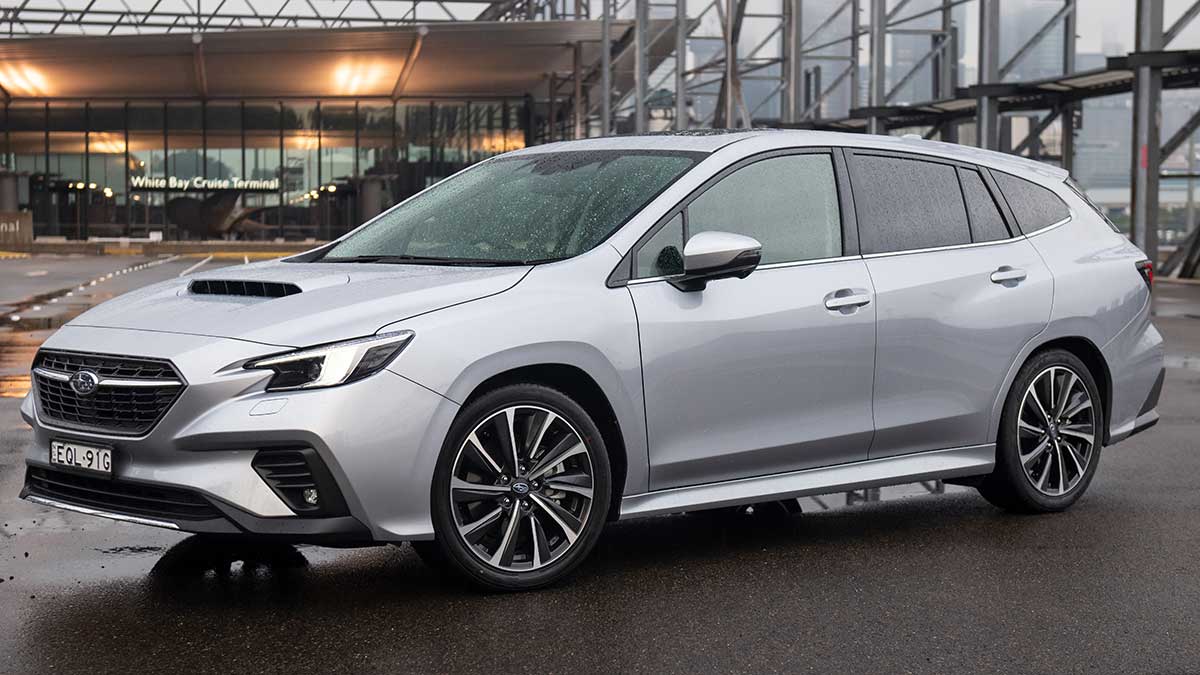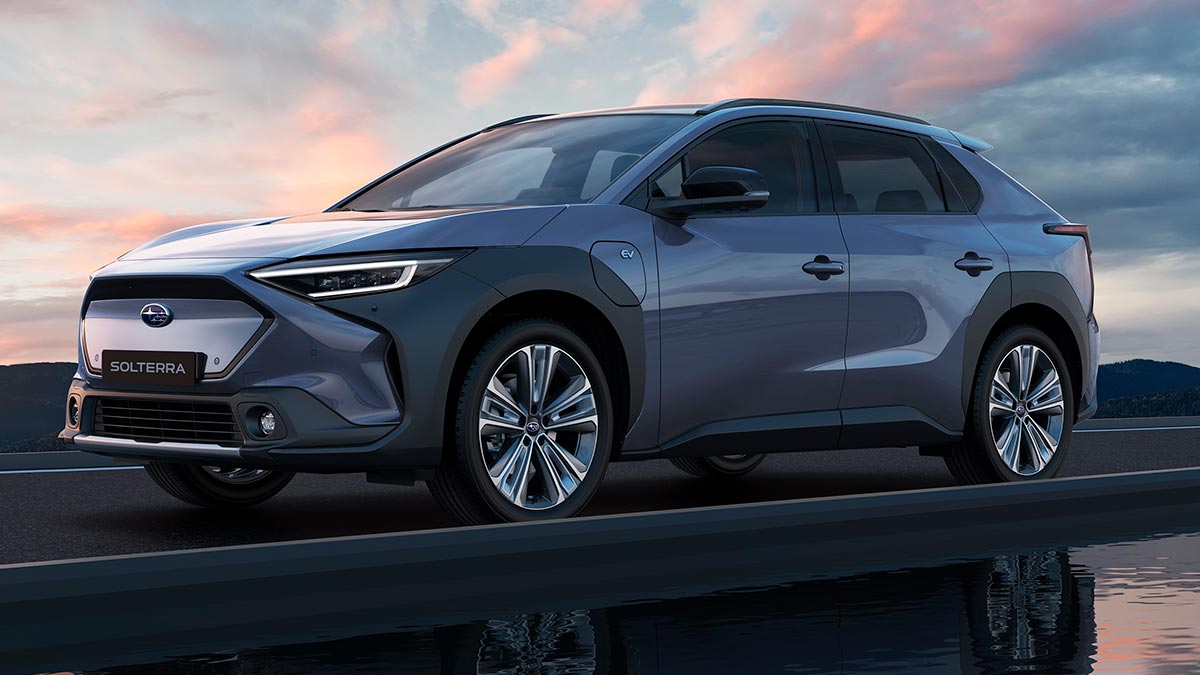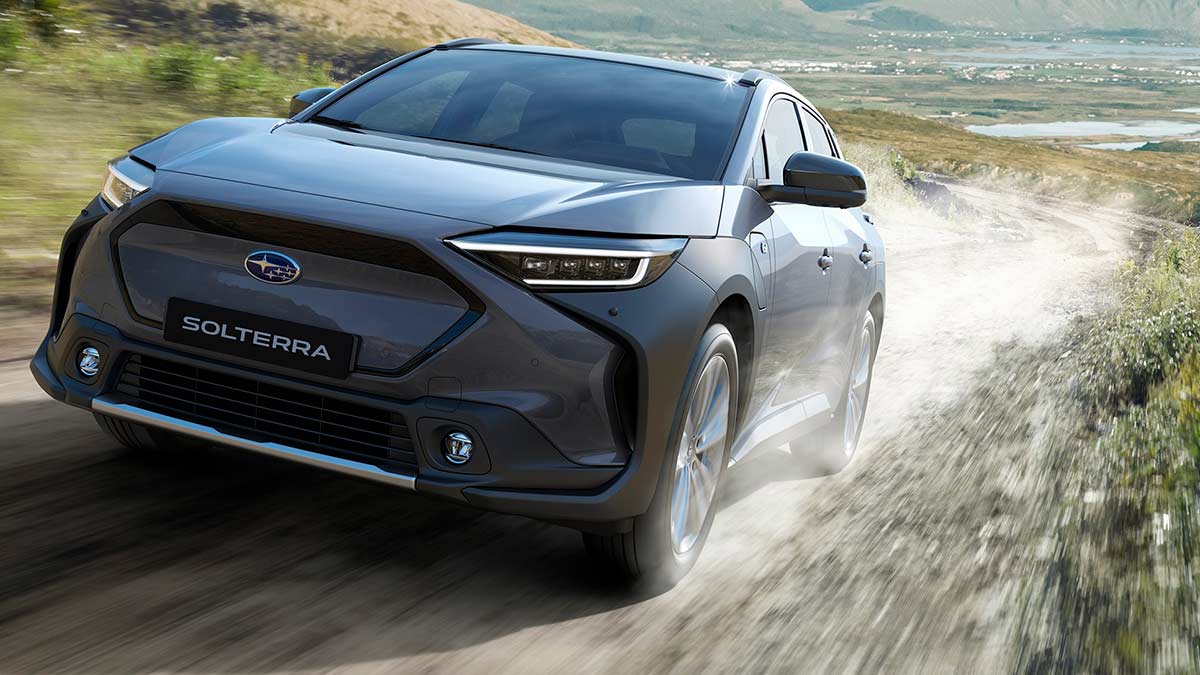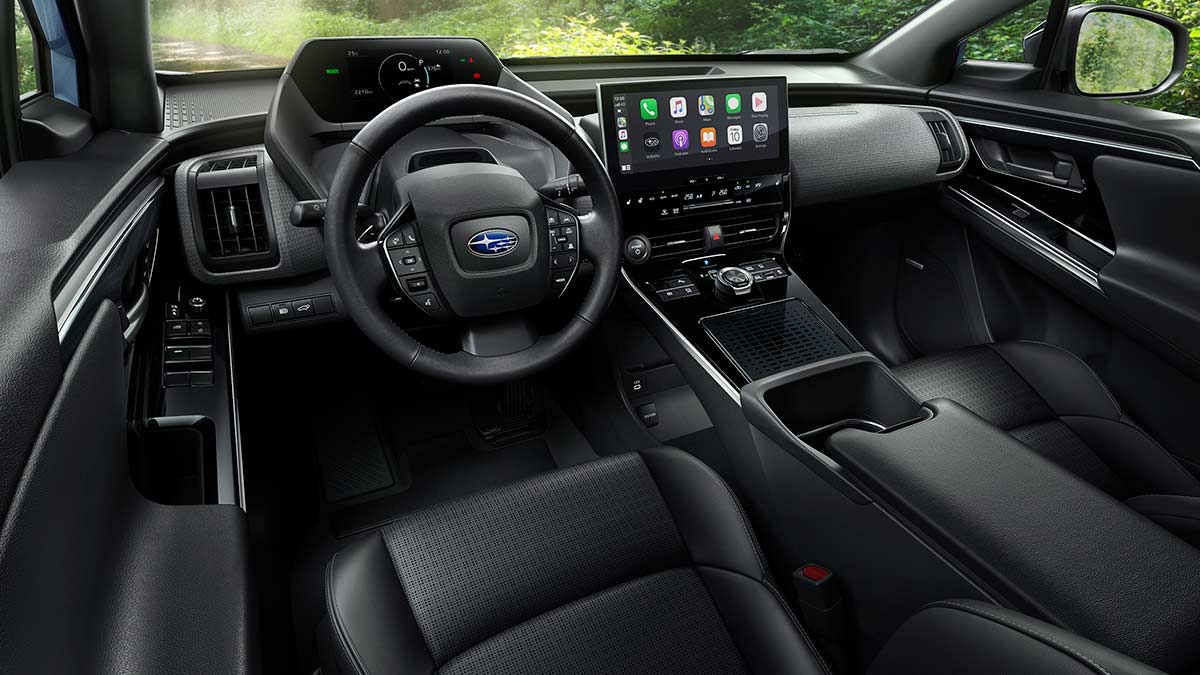The Chery Omoda E5 is the brand’s first fully electric vehicle and joins the petrol version of the Omoda 5 in Chery’s growing range of SUVs. How does one of Australia's cheapest electric SUVs stack up?
Boy racer grows up: 2022 Subaru WRX first drive review

It’s a case of boy racer begone as Subaru’s fifth generation WRX looks to add polish to the driving experience, rather than outright pace.
Subaru’s WRX defined the boy racer concept when it launched in Australia 28 years ago. It was fast and furious before Vin Diesel ever slid behind the wheel of a Hollywood-movie hyper car and it earned a deserved cult following for its combination of power and handling.
Fast-forward 28 years and the latest WRX attempts to be more things to more potential buyers. It’s still quick, if not class-leading in terms of outright pace and the interior feel is a marked improvement.
The upside is the variety of vehicles, over sedan and wagon styled bodies, ensures the WRX caters to more buyers than ever before.
Ultimately the WRX also shows there’s more to performance driving than straight-line speed.
On this page
- How much does the Subaru WRX cost?
- Is the Subaru WRX safe?
- What's the Subaru WRX like inside?
- What's under the Subaru WRX's bonnet?
- How does the Subaru WRX drive?
- Should I buy one?
- Subaru's first electric vehicle on the way
How much does the Subaru WRX cost?
Pricing for the fifth-generation WRX sedans kicks off at $44,990 plus on-road costs for the base WRX, climbing to $48,990 for the same version fitted with a continuously variable automatic transmission and the “EyeSight” advanced driver safety sensors and software, which aren’t available on manual models.
Standard gear on both includes cloth seats, dual-zone climate control, 18-inch alloys wheels, and an 11.6-inch infotainment touchscreen.
The RS versions add a sunroof, powered and heated suede-feel front seats, heated outboard rear seats, a pair of rear USB ports to match the two up front, a 10-speaker Harmon/Kardon sound system and an auto-dimming rear mirror. Prices start at $50,490 for the manual and $54,590 for the CVT.
The top-spec tS variants are CVT only and come with adaptive dampers and a five-mode drive-select system that lets owners control the likes of throttle response, transmission, suspension set-up and steering weight.
The “Sportswagon” is a CVT-only proposition across the three grades, reflecting the fact Subaru expects the wagon to appeal to a different type of buyers who still want a quick car but prioritise versatility over outright volatility.
The base wagon is $49,990, the GT costs $55,490 and the tS is $57,990.
In wagon guise, even the entry model has the rear USBs, though you have to buy the tS to pick up the suede-feel seats.
Rivals range from the front-wheel drive Hyundai Kona N small SUV and i30 N sedan priced at $48,000 and $49,000 plus on-road costs respectively, to the all-wheel drive Volkswagen Golf R at $65,990 for the hatch and $68,990 for the wagon.
Refreshingly, WRX service intervals now mirror the industry average at now 12 months/15,000km rather than 12,500km as applies to some other Subaru products.
The first five visits (equating to the warranty period) will amount to $2,365.74 for vehicles fitted with the CVT and $2,433.06 for manual gearbox vehicles.
Is the Subaru WRX safe?
Subaru isn’t pre-empting the ANCAP assessment, so won’t comment on the WRX’s safety credentials. Safe to say, the CVT version will earn a higher rating courtesy of the extended safety kit.
All WRX’s benefit lane-change assist, a blind-spot monitor and rear cross-traffic alert.
Those fitted with the CVT add autonomous emergency braking in forwards and reverse, coupled with autonomous emergency steering, meaning the WRX will not only engage the brakes but will steer away from the potential crash if the sensors and software can detect a safe route.
There’s also active lane keeping (where the car will steer itself back into the lane), a lane centring function (where the car’s cameras are used to keep it between the white lines), adaptive cruise control, traffic sign recognition and automatic high-beam headlamps.
What’s the Subaru WRX like inside?
The style is mainstream without delving near the premium end of the segment. An 11.6-inch touchscreen dominates the dash. That has the effect of letting Subaru reduce the physical button clutter up front for a more refined look.
Thankfully you don’t have to delve into secondary screens to access the climate control settings and a physical volume dial has been retained.
The faux carbon-fibre looks is now more realistic and the angles and surfacing is well-considered. A pair of USB ports located in the back of centre console in the rear most versions, surrounded by a pair of air vents, adds to the amenity.
The seats front and rear are well bolstered (this is still essentially a four-person vehicle) and the view outside is good from any angle.
What’s under the Subaru WRX’s bonnet?
This iteration of the WRX adopts a 2.4-litre turbo four-cylinder petrol engine to deliver marginally more power than the outgoing model (a 5kW increase to 203kW) and the same torque (350Nm) as the previous 2.0-litre turbo’s 350Nm.
The turbo’s peak boost is well down on its predecessor, giving the aftermarket tuners a huge amount of scope to work with.
Subaru has confirmed there won’t be a petrol WRX STI high-performance edition, but does hint the next-gen STI will be an electrified model.
Is the Subaru WRX efficient?
Efficiency isn’t the forte for the newest Subaru WRX. This bad boy uses a claimed 9.9 litres/100 kilometres on the combined cycle for manual versions.
That’s thirsty, no matter which way you look at it. Many buyers won’t care and will take the three-pedal vehicle because of their preference for shifting gears themselves.
The fuel use drops to a more acceptable 8.5 litres/100km for the CVT, compared to 8.2 litres/100km for the Hyundai I30 N and 7.3 litres for the VW Golf R.
How does the Subaru WRX drive?
The “Rex” is fundamentally still a driver’s car, if not, at least in this iteration, intended to be the most potent of the bunch.
In terms of straight-line acceleration, it has dropped 0.7 of a second on the third-generation car, from 5.3 seconds to 6.0 seconds, or 6.1 with the CVT.
It is also disturbingly quiet. Raucous has given way to reserved in terms of exhaust note, which is a touch incongruous for a car with four tailpipes and the legacy of this vehicle. Second-hand WRX's are typically fitted with cat (and we're not talking catalytic converter)-accommodating 3-inch exhausts, ensuring the neighbours know when you're in the adjoining suburb..
Where it atones for the above is through the corners. Subaru’s deserved reputation for all-wheel drive grip gives the Subie huge mid-corner pace and grin-inducingly brisk throttle response once the steering is wound off on corner exit.
There is an exception, though and it comes in the form of Sportswagons on conventional shocks and springs. Subaru has softened the suspension set-up compared with the equivalent sedans to cater for the wagon’s extra 110kg of mass and the fact Subaru envisages owners will actually use the load capacity.
The tyre type and width also differ from the sedan, leading to less grip on corner entry. Tapping the brakes and applying more steering then transfers weight to the back of the car, which bounces due to the load transfer and unsettles the chassis.
The upshot is it struggles to earn to the WRX decal that adorns the tailgate.
Drive it in isolation and it's fine. Swap into a tS variant and it's chalk and cheese.
The tS's adaptive dampers, when set in Sports mode, ensure the Sportswagon behaves exactly like its sedan stablemate, and is a far more potent corner carver.
Sedan buyers will be reassured to note the regular shocks and springs models will match the more expensive tS version in the tight stuff. The lack of adjustment inevitably makes them a touch less compliant than the “Normal” setting on the adaptive dampers. For the record there is a “Comfort” setting and, no, we didn’t sample it.
The manual gearbox is the one to have, except it can’t be had with the adaptive dampers. Damn. The CVT does a good job of pretending to be an automatic, without actually being one.
The fact it is slower to 100km/h than the manual highlights this fact: experience indicates fitting a dual-clutch or quick-shifting conventional auto to the WRX would drop the sprint times into the five-second bracket. They’d also provide more engine braking when decelerating/downshifting, but the Subaru’s braking prowess easily compensates.
For now, 18-inch wheels are the only factory option, but the company admits it is looking into bigger rims and a more exuberant exhaust. If they don’t do it soon, watch the third-party providers climb on board.
Should I buy one?
The WRX maintains its mantle as an affordable performance vehicle with the versatility to do daily driving duties and then cling like a limpet on slippery corners. Getting the thing to understeer on tight public roads will take a big dose of courage or contempt.
There are quicker cars in the class, but they all cost more and will struggle to leverage that acceleration on back roads. The tighter the turns get, the better the WRX will be.
There will also be buyers who have always wanted a Rex since the cars first arrived in Australia, but are only now at a stage where finance permits. Like those prospective buyers, this WRX has matured inside and out, but provoke it and it will rapidly prove it knows its way around.
Subaru’s first EV, Solterra, to arrive in 2023
The Subaru Solterra will go in sale in the first half of next year, launching the brand’s electrified range in Australia.
Subaru Australia managing director, Blair Read, couldn’t provide much in the way of detail on local models, that’s probably down to the fact Subaru is being hammered by chip issues like every other car maker.
“Solterra starts a new era for Subaru by combining electric vehicle technology with symmetrical all-wheel drive. This delivers the all-terrain capability Subaru owners have enjoyed for decades,” Read says.
What we do know is the Solterra will boast 160kW and 336Nm, along with an electric range of around 360 kilometres.
The electricity is stored in a 71.4kWh battery pack and the Solterra can recharge at up to 150kW, meaning a top-up to 80 per cent at a compatible DC charger will take around 30-40 minutes.
There is no storage space under the bonnet and interior space is also reasonably tight in the overseas version shown to Australian journalists. Front head room for those over 180cm was tight and there was no prospect of fitting three adults in the back.
The Solterra will arrive around the same time as it’s Toyota counterpart, the bZ4X. Toyota’s version will be available in front and all-wheel-drive guise.
The information provided is general advice only. Before making any decisions please consider your own circumstances and the Product Disclosure Statement and Target Market Determinations. For copies, visit racv.com.au. As distributor, RACV Insurance Services Pty Ltd AFS Licence No. 230039 receives commission for each policy sold or renewed. Product(s) issued by Insurance Manufacturers of Australia ABN 93 004 208 084 AFS Licence No. 227678.
